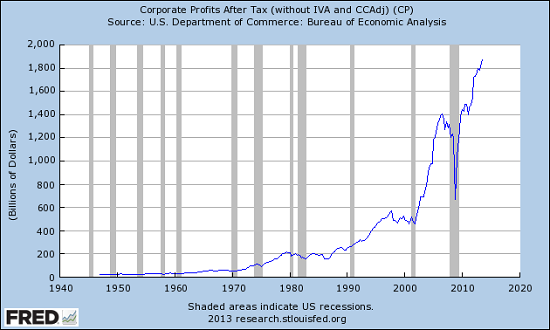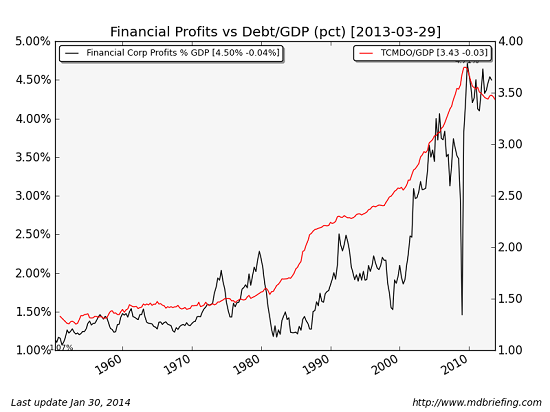By Dave Moenning
It is clear that the focus of the stock market remains squarely on the geopolitical situation in Ukraine/Crimea/Russia (NYSE: RSX). What is not quite so clear is why this actually matters to traders.
Before we go any further on this topic, let me first state that this missive is not a pontification on the expertise of the politics of Russia, Ukraine or Crimea. Heck, we struggle to keep up with the shenanigans that occur in Washington, D.C. However, when the stock market's focus turns to a specific topic, it is important for investors of all shapes and sizes to try and understand what is going on, and why.
The overall objective at times like these is to try and make sense of whatever is driving the action. To be honest, traders don't really care whether Crimea stays with Ukraine or becomes a Russian state. However, what traders do care about is whether or not the situation in Crimea will turn the current pullback into something more meaningful.
In looking at the recent action the first question is, why are traders selling? With all the talk of referendums, troop movements and economic sanctions going on last week, it wasn't exactly a surprise that traders decided to avoid the potential "weekend headline risk" by doing some selling into Thursday/Friday.
However, traders should also keep in mind that stocks came into last week at all-time highs, that the indices were overbought, and that sentiment was becoming overly optimistic. Therefore, a pullback of 1.96 percent - for any reason - isn't exactly a cause for alarm.
So, other than the fact that stock prices have been pushed down a bit, it's unsure that the situation in Crimea is worthy of the "crisis" label being applied currently. Sure, people could be concerned that the powers-that-be in Washington might do something stupid and wind up fighting another war. But seriously folks, isn't this an outlier possibility? After the political mess that was created by picking a fight in Iraq and Afghanistan, does anybody really think a war over a pipeline in Crimea is the likely outcome here?
Just The Facts Ma'am
Let's look at some of the facts of the situation. On Sunday, a referendum was held in Crimea asking citizens if they would like to come under Russia's flag. In essence, the Crimean's were taking a vote on whether or not to secede from Ukraine.
To be sure, the outcome of the vote was expected to go Russia's way. However, exit polls showed that 95.5 percent of voters favored joining Russia over staying part of Ukraine. And running contrary to the West's contention that people were being forced to vote this way, voter turnout was 79 percent. Which, by the way, was higher than ANY Presidential election in the United States since 1900.
As expected, the U.S., the U.K., and the Eurozone object to this whole thing, contending that the vote in Crimea would be rigged and that it violates international law. Cue the sternly worded statements of contempt, the threats of sanctions, and the resolutions in the U.N. Yep, we've all seen this movie before.
On that score, we received the following note on Wednesday last week from someone who actually is an expert on this stuff:
I know far less than any of you about the stock market per se. My background is in Russian history. Here is what I do know: the Crimea situation will continue to be serious for at least a few weeks, possibly escalating into the next few months... There's a 100% guarantee of that Crimea's lawmakers won't budge and that the referendum will go through on Sunday. Ukraine will probably declare the referendum null and void before Sunday and may formally dissolve the Crimean parliament from afar, but that will change nothing on the ground.
On Sunday, Crimea's residents will vote with a virtual guarantee that the referendum will pass. Ukraine will scream but do nothing. The West will issue a lot of stern warnings. The ball will now be in Russia's court. Odds are high that Russia will vote to formally annex Crimea or do something very close to that in essence. This may happen as early as next Monday. The West will make even more noise. In short: expect Crimea to dominate the news between Friday and Tuesday. I don't know if this is enough to trigger a correction, but I can assure you that my short positions in East Europe are doing well.
What Do The Charts Say?
As has been written a time or two already this year, one of the best ways to tell if you've got a real crisis on your hands is to listen to the message from the charts. So, let's briefly review the action on a few key indices and see what we see.
S&P 500 Daily
Although there is a lot of concern and teeth gnashing about the situation in Crimea, traders will have to admit that the chart of the S&P 500 (NYSE: SPY) still looks pretty darned good. One take is that unless the February low is taken out, the bulls can say they remain large and in charge. This doesn't mean that things won't get nasty here or there. But, again, from a big-picture, simplistic standpoint, there doesn't appear to be much to worry about at the moment.
VIX Weekly

Speaking of fear, the chart of the VIX (NYSE: VXX) really tells the story nicely. In this weekly chart, you can clearly see what real fear (i.e. a real crisis) looks like. Since 2011, the spikes in the VIX have declined as the various crises that cropped up weren't really a big deal and wound up fizzling fast. And since the middle of 2013, a weekly close above 19 appears to be the line in the sand determining what is or isn't a crisis. And while the VIX has spiked, the move does not yet appear to qualify as a reason to panic.
10-Year Note Yields Daily

The same can be said for the action in the government bond market. While the chart of the 10-year note yield (NYSE: IEF) does appear to present a double top, it is also clear that rates are not diving at the present time. And if we did indeed have a crisis on our hands, rates would be moving down - and fast. Therefore, traders should look for a break below 2.50 percent as a sign that something serious could be occurring.
The Bottom Line
As the expert on Russia wrote, the situation in Crimea could certainly remain a focus for a while. And threats to sell U.S. bonds or retaliate against sanctions could indeed cause the algos to lean to the sell side.
However, so far at least, investors who don't trade on a millisecond basis may be better off focusing on other things such as the bond default and/or growth issues in China, the upcoming Fed meeting, or the U.S. economic data. Because from where most sit, all might be better uses of time.
See the original article >>













